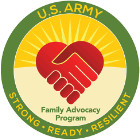What is the NCRT and how to use it?
The Penn State Clearinghouse was sponsored by the Office of the Secretary of Defense (OSD) Military Community and Family Policy (MC & FP), through a cooperative agreement with the National Institute for Food and Agriculture, to assist in the development and evaluation of a Problematic Sexual Behavior (PSB) Non-Clinical Referral Tool (NCRT) that is intended to assist DoD Education Activities (DoDEA) and Child Development/Youth Program (CD/YP) personnel in determining if a referral or consult to the Family Advocacy Program (FAP) is warranted based on the sexual behavior(s) exhibited by the child(ren) or youth. The NCRT also assists FAP personnel in establishing if a referred incident should be considered non-normative and if engagement of the multidisciplinary team (MDT) should be initiated. The Clearinghouse hosts the NCRT Support Site that is intended to support DoDEA, CD/YP, and FAP personnel in the training and implementation of the NCRT. Clearinghouse professionals are available to support DoDEA, CD/YP, and FAP personnel via email (PSBToolSupport@psu.edu) or the phone helpline at 1-877-382-9185 weekdays from 9 a.m. to 5 p.m. EST/EDT.
The NCRT can be used by only by the DoDEA, CD/YP, and FAP. The tool consists of two parts. Section 1 is a Sexual Behavior Guide in which the alleged behavior is assessed by the approximate developmental age of the child. Section 2 consists of a series of questions for the referral source and for FAP to consider whether to engage the MDT.
In Part 1, there are separate sections for recording the behavior of children. Its purpose is to assist with categorizing the behavior for the DoDEA, CD/YP, and FAP.
There are separate sections for recording the behavior of children if there is more than one child involved or if there is only a single child. Behaviors are categorized in age group intervals of 2-4, 5-9, 10-12, 13-18 years. The possible behaviors fall into three categories for each age group:
- Normative “common” sexual behaviors,
- Cautionary “less common” sexual behaviors, and
- Problematic “uncommon” sexual behaviors.
Part 2 consists of instructions for DoDEA and CD/YP personnel to follow when the behavior falls into one of the three categories of behavior: normative, cautionary, or problematic. Included in these instructions is the decision for the FAP on whether to convene the MDT.
Follow-on steps for management will be conducted by the organizations involved in the decisions by the MDT.
The processes involved in the use of the NCRT do not function as in an Incident Determination Committee, in which an incident is determined as meeting or not meeting criteria.



